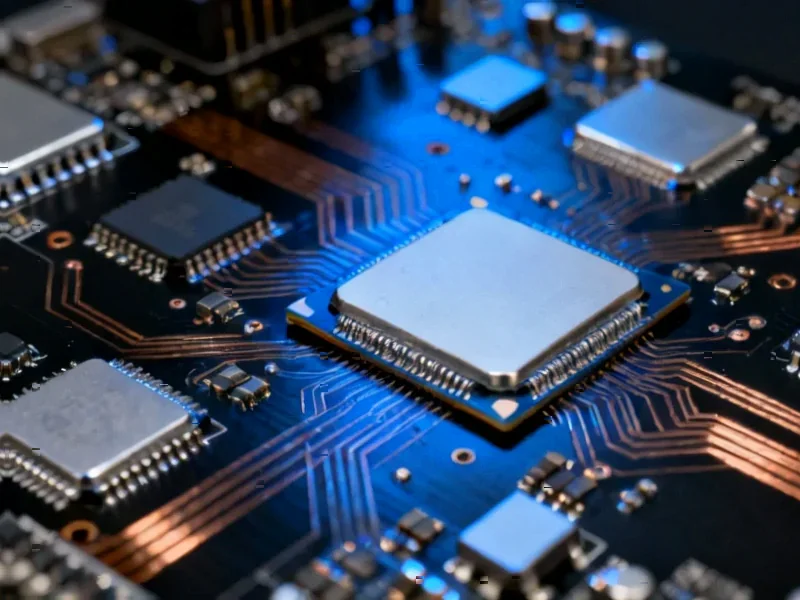According to Phoronix, Intel has begun preparing Linux graphics driver support for its upcoming Nova Lake Xe3P architecture, including DisplayPort 2.1 Alternate Link Power Management (ALPM) capabilities. The development work, currently in early stages, focuses on enabling the display engine components for Intel’s next-generation integrated graphics solution. Notably, some Xe3P variants will lack ray-tracing support, indicating segmentation within the product family. The driver updates are being contributed to the open-source Linux graphics stack, continuing Intel’s long-standing commitment to open driver development. This early preparation suggests Intel is aligning its software readiness with anticipated hardware launches.
The DisplayPort 2.1 Power Play
The inclusion of DisplayPort 2.1 ALPM support represents more than just a technical checkbox—it’s a strategic move in the ongoing power efficiency wars. DisplayPort 2.1’s Alternate Link Power Management specifically targets reduced power consumption during display operations, which becomes critically important for mobile devices and energy-conscious data centers. While AMD and NVIDIA have been gradually implementing DisplayPort 2.1 support, Intel’s focus on ALPM specifically suggests they’re targeting efficiency-sensitive markets where battery life and thermal management are paramount. This could position Intel favorably in the laptop segment and emerging ARM competition where every watt matters.
The Ray-Tracing Divide Deepens
The revelation that some Xe3P variants will lack ray-tracing capabilities reveals Intel’s evolving segmentation strategy. Unlike their discrete Arc graphics cards where ray-tracing is standard across the lineup, integrated graphics present different economic realities. This creates a three-tier market: entry-level users who get basic acceleration, mainstream users who receive enhanced gaming capabilities, and premium segments accessing full ray-tracing. The decision likely reflects yield optimization, die area constraints, and market positioning against AMD’s RDNA integrated graphics. For Linux users specifically, this means driver complexity increases as Intel must maintain multiple feature paths within the same architecture family.
Linux as Strategic Infrastructure
Intel’s early Linux driver work, as reported by Michael Larabel’s coverage, demonstrates how crucial the open-source ecosystem has become for hardware readiness. By contributing these drivers upstream months—potentially years—before hardware availability, Intel ensures that when Nova Lake systems ship, they’ll work seamlessly with contemporary Linux distributions. This approach contrasts sharply with the historical pattern of proprietary drivers lagging behind hardware launches. The strategy pays dividends in data center deployments, cloud infrastructure, and developer workstations where Linux dominance requires day-one compatibility. It also builds goodwill within the open-source community that can translate into faster bug fixes and broader adoption.
Shifting Competitive Dynamics
Intel’s integrated graphics advancements arrive during a period of unprecedented competition in the GPU space. With AMD refining their RDNA architecture for APUs and Apple making significant strides with their Apple Silicon graphics, Intel cannot afford to lag in basic display capabilities. The DisplayPort 2.1 support positions them technically ahead of many current integrated solutions while the ray-tracing segmentation allows them to compete on price at the entry level. For the broader market, this continued pressure from Intel helps prevent stagnation and ensures that even budget systems will see meaningful graphics improvements in the coming generations.
Developer Ecosystem Consequences
The feature segmentation creates interesting challenges for game developers and application creators targeting the Linux platform. With some systems supporting ray-tracing and others lacking it, developers must implement graceful fallback paths while maintaining visual quality. This fragmentation is familiar to mobile developers but represents new territory for the traditionally more homogeneous PC Linux gaming market. However, as industry analysis suggests, this could ultimately benefit the ecosystem by forcing more sophisticated graphics pipeline management and potentially driving innovation in scaling techniques that work across capability tiers.




